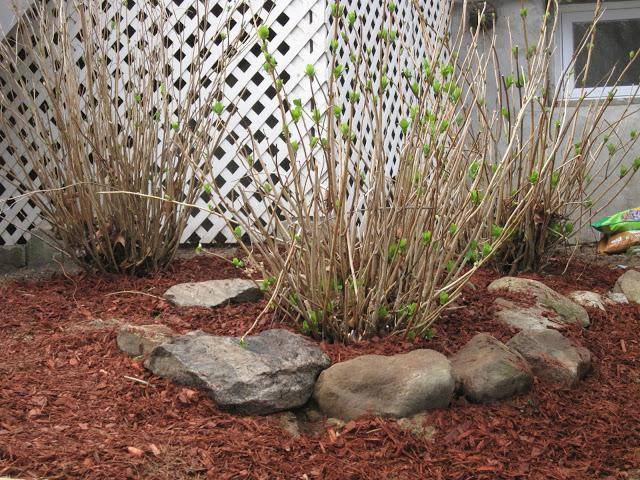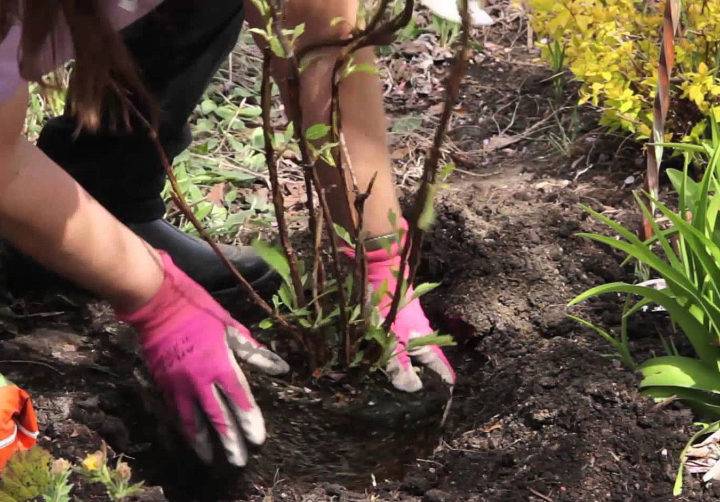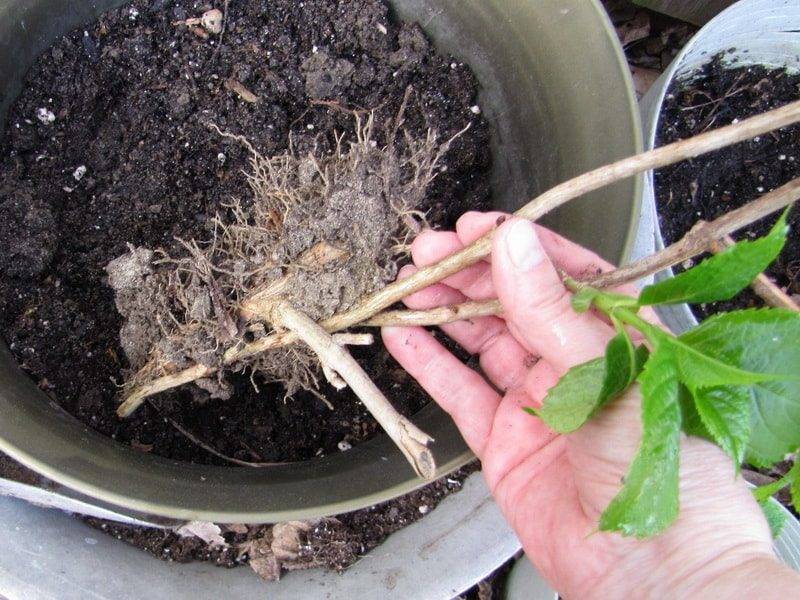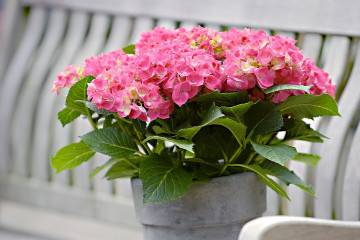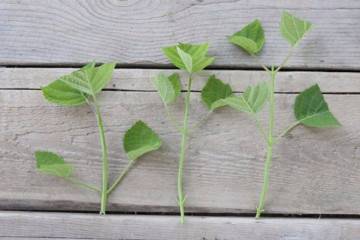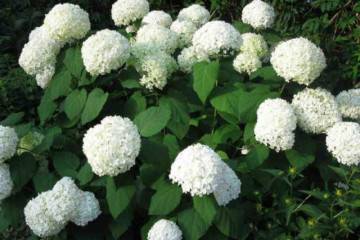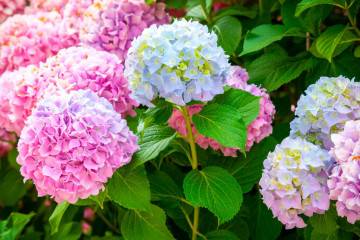Hydrangea Earley Sensation or Early Sensation
Content:
In Latin, the hydrangea Erly Senseishen is called Hydrangea paniculata early sensation, in Russian it is translated as "hydrangea paniculata Early sensation." The shrub lives up to the name: panicle inflorescences begin to bloom in early summer, much earlier than other varieties of this species.
Origin and appearance of hydrangea Erle Senseishen
The Erly Senseishen hydrangea variety owes its birth to an accident. Among the seedlings of hydrangea in the nursery of the Dutch city of Boskop in 1991, an interesting non-standard seedling was discovered.
According to the botanical description, this is a medium-sized shrub with straight shoots of a brownish-reddish hue, which do not need a garter or support. It grows up to 1.5 m wide. Green oval leaves (unlike wide leaves in large-leaved hydrangea) are rough to the touch, the edge is cut with small teeth.
How the hydrangea of Erle Senseis blooms
Hydrangea Earley Senseishen forms inflorescences on young, not lignified shoots, and on last year's shoots. Blooms from early June until the first night frosts.
The racemose inflorescences are friable, reaching 30 cm in length. They consist of individual flowers, the diameter of which is 3-5 cm. The brush contains sterile pinkish flowers and fertile creamy flowers. The more large sterile flowers, the denser the inflorescence looks. The smell is pleasant, with a hint of honey, but weak.
During flowering, the petals change from a delicate pink hue to a rich purple or burgundy.
Transplanting hydrangea Early Senseishen after purchase in open ground
The best time for planting is April, when the threat of repeated frosts has passed: the seedlings will have time to take root and endure the winter well. In September, hydrangea can only be planted in warm regions. When transplanting a plant in the summer months of flowering, you will have to wait several seasons.
What is needed for landing
Early Sensation hydrangea is unpretentious in cultivation, but it has the minimum conditions for a comfortable life:
- the right place;
- pH-balanced soil;
- compliance with the humidity regime.
When transplanting, a seedling with an open root system is treated in a solution to stimulate root formation.
How to choose the best place
Hydrangea paniculata Sensation is capable of reaching 50 years of age, and this is taken into account when choosing a place for planting in order to avoid problems.
Things to consider:
- The sun's rays should not scorch the bush at noon. It is better to focus on the western or eastern part of the site, where the plant will receive soft sunlight.
- Hydrangea does not like drafts, but the air in the area should circulate freely. The walls of the building and fences will be good protection. When landing, it is imperative to step back one and a half meters from them. In a strongly shaded place, the shrub stops flowering or its brushes become very shallow.
- A place near large trees is not suitable. They take a lot of moisture from the soil.
- The culture does not tolerate stagnant moisture. Areas with high groundwater, lowlands are not suitable for it.
Step-by-step planting process
Prepare a planting pit for a seedling in advance:
- At the chosen place, sour high-moor peat is scattered (1 bucket per 1 sq. M) and dug up along with the soil.
- Prepare a landing pit measuring 60 X 60 cm.
- A drainage layer is placed at the bottom of the hole, rotted needles to acidify the soil and cover everything with a layer of earth.
- In a bucket, humus or compost is mixed with sour peat in equal proportions.
- The pit is filled 2/3 with this mixture.
- Add a handful of superphosphate.
- Water the hole abundantly.
The measures taken create a slightly acidic soil, which panicle hydrangea loves.
When planting a seedling, the root collar is not buried.
If a seedling with an open root system, then for planting it is placed on a mound of fertile soil and the roots are straightened. The hole is filled with the remaining soil mixture, leaving no voids among the roots, then tamped and watered again.
The last step after planting a seedling is mulching with coniferous sawdust or peat with a layer of up to 6 cm.
Reproduction of hydrangea Erle Senseishen
Even an inexperienced florist can easily propagate hydrangea, if he chooses the right option for himself.
Propagation by cuttings
Hydrangea Sensation is easily propagated by cuttings. Both green and lignified cuttings are suitable. Shoots left after pruning are suitable as lignified cuttings. They have a high survival rate.
Rooted cuttings are transplanted to a permanent place after 2 months.
Growing from cuttings
They begin to reproduce by layering in early spring, before the buds open. Prepare the soil next to the bush: dig up, remove weeds, level.
Healthy lateral shoots are laid in furrows up to 2 cm deep. The laid branches are fixed with staples, then sprinkled with earth.
Care consists in regular watering; there is no need to feed separately from the mother bush. To accelerate the emergence of roots, they resort to the constriction of the layering with a soft wire in front of the first bud. The shoots that appear are periodically spud.
The young plant is separated and transplanted to a permanent place after a year.
Dividing the bush
All types of hydrangeas can be propagated by dividing the bush, except for the panicle hydrangea Erly Senseishen. With age, this shrub slows down the formation of new roots, the wounds overgrow for a long time.
Hydrangea Care Earle Senseishen
Variety Early Sensation is well adapted for growing in temperate climates. Subject to the basic rules, hydrangea will delight with lush flowering for many years.
Watering mode
The shrub needs watering throughout the growing season. Its fibrous roots are located superficially and are not able to independently obtain moisture.
It is watered 2 times a week, taking into account the weather conditions, preferably with soft, settled water to prevent alkalization of the soil. After moistening, the ground around the bush is mulched, slightly stepping back from the trunk.
Top dressing
The choice of fertilizer for panicle hydrangea depends on the season:
- in the spring, nitrogen fertilizers are applied;
- at the beginning of budding, potash fertilizers are used;
- in the fall, potassium-phosphorus feeding is carried out.
2-3-year-old seedlings do not need feeding.
Features of care during the flowering period
For full flowering, the soil around the bush is loosened from time to time to ensure good aeration of the roots. Loosening should not be deeper than 5 cm; it is carried out after watering.
In the summer, it is important to mulch the soil around the bush to keep moisture around the trunk circle longer. In the middle of summer, a complex fertilizer is used, for example, "Kemira flower", which helps the inflorescences to bloom together and bloom for a long time.
Features of care during the rest period
After flowering, dried panicles are cut off. Branches can be shortened 2/3 of the length.
Preparing for winter
In late autumn, the bush is watered abundantly. This technique will help the roots to increase their frost resistance. Adult plants tolerate frosts up to 25 degrees, it is enough to lay the mulch in a thick layer. Young plants up to 3 years old need additional shelter, frost resistance increases with age.
Winter hardiness and long lush flowering attracts the attention of gardeners from many regions of Russia to the Earley hydrangea. The shrub looks good in group plantings and as a tapeworm. Caring for him is simple, so this plant should be settled in the garden to admire its beautiful flowering.

